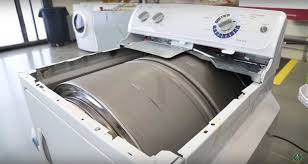
Breaking News
 Outrage Erupts as Released MS-13 Gang Member Kilmar Abrego Garcia...
Outrage Erupts as Released MS-13 Gang Member Kilmar Abrego Garcia...
 The backbone of U.S. capital markets just got the green light to move $100 trillion onchain
The backbone of U.S. capital markets just got the green light to move $100 trillion onchain
 SILVER IS ENTERING A "GENERATIONAL" SQUEEZE.
SILVER IS ENTERING A "GENERATIONAL" SQUEEZE.
Top Tech News
 EngineAI T800: Born to Disrupt! #EngineAI #robotics #newtechnology #newproduct
EngineAI T800: Born to Disrupt! #EngineAI #robotics #newtechnology #newproduct
 This Silicon Anode Breakthrough Could Mark A Turning Point For EV Batteries [Update]
This Silicon Anode Breakthrough Could Mark A Turning Point For EV Batteries [Update]
 Travel gadget promises to dry and iron your clothes – totally hands-free
Travel gadget promises to dry and iron your clothes – totally hands-free
 Perfect Aircrete, Kitchen Ingredients.
Perfect Aircrete, Kitchen Ingredients.
 Futuristic pixel-raising display lets you feel what's onscreen
Futuristic pixel-raising display lets you feel what's onscreen
 Cutting-Edge Facility Generates Pure Water and Hydrogen Fuel from Seawater for Mere Pennies
Cutting-Edge Facility Generates Pure Water and Hydrogen Fuel from Seawater for Mere Pennies
 This tiny dev board is packed with features for ambitious makers
This tiny dev board is packed with features for ambitious makers
 Scientists Discover Gel to Regrow Tooth Enamel
Scientists Discover Gel to Regrow Tooth Enamel
 Vitamin C and Dandelion Root Killing Cancer Cells -- as Former CDC Director Calls for COVID-19...
Vitamin C and Dandelion Root Killing Cancer Cells -- as Former CDC Director Calls for COVID-19...
 Galactic Brain: US firm plans space-based data centers, power grid to challenge China
Galactic Brain: US firm plans space-based data centers, power grid to challenge China
Innovative Machine Dries Clothes In 20 Minutes Using 70% Less Energy And NO Heat

New ultrasonic drying technology uses 70% less energy and dries clothes in 20 minutes - no heat required!

Credit: US DOE
The topic of washing and drying clothes might not be nearly as sexy as, say, renewable energy and Tesla cars, but it's an important one, considering that 80% of households in the U.S. use dryers which account for approximately 4% of all residential electricity consumption.
In an attempt to cut down on utility costs and benefit the environment, a number of eco-minded consumers have begun using clotheslines to dry their clothes. However, if the ultrasonic clothes dryer turns out to be as effective as researchers are predicting, environmentalists will no longer need to rely on clotheslines to dry their clothes – an exciting prospect, indeed.
TreeHugger relays that scientists at the Oak Ridge National Laboratory (ORNL), with support from the US Department of Energy's Building Technologies Office and GE Appliances, have been working on a prototype of an innovative clothes drying technology that could shorten drying time to an astounding 20 minutes. In addition, it could reduce the amount of energy used for each load by a whopping 70%!

 This is not a bubble.
This is not a bubble.


